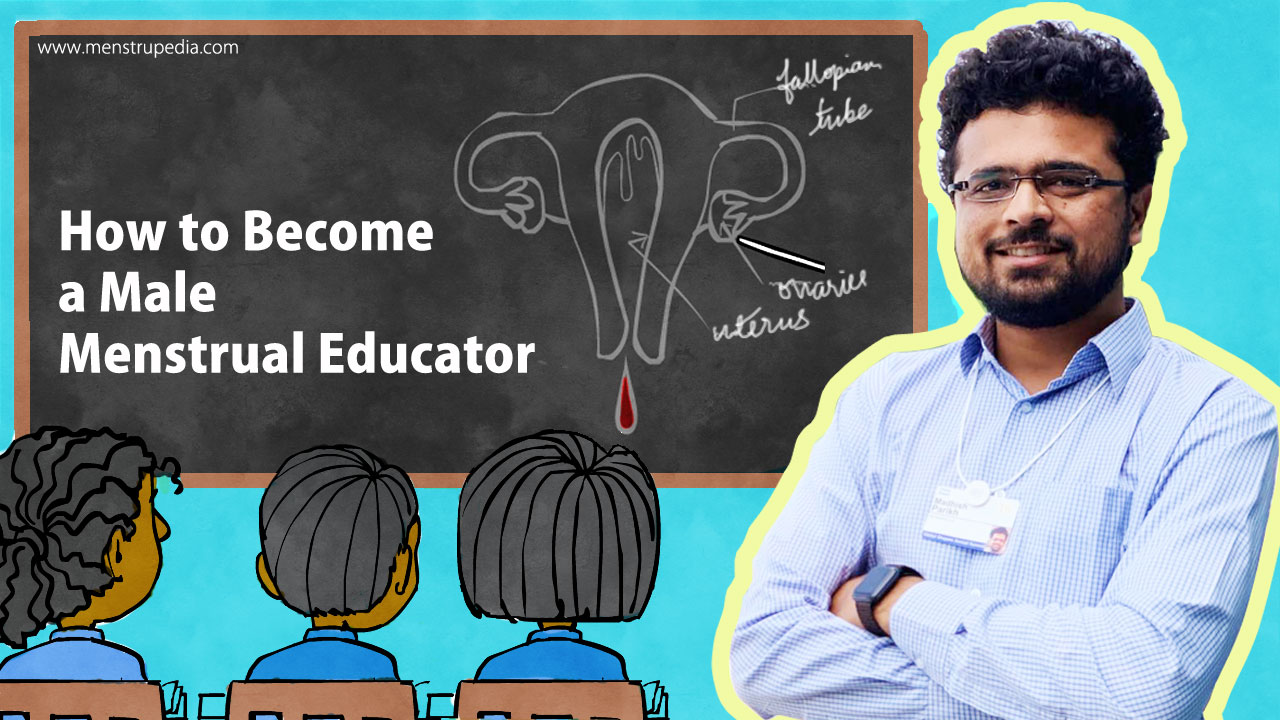Disclaimer: Views expressed here are of the author alone and do not necessarily represent that of the Organization
Reference video: WOMAN (sic) AND SABARIMALA – The Science behind Restrictions
Umesh Sharma, Advocate, Supreme Court, talks to Sinu Joseph.
On World Menstrual Hygiene day, this video of an interview with Sinu Joseph on her new book began making the rounds on social media. My intent in this article is not to question anyone’s religious or spiritual beliefs or to judge women’s agency to decide which places they choose or wish to visit or not; that is a separate discussion. As a non-medically trained person of no authority but purely interested in critical questioning, I wish for this article to be a stream of critical thought that accompanies you if you elect to watch this interview.
. . . . .
The talk is premised on individual lived experience, Joseph says, from accounts collected from women over ten years. Lived experience is not under my critical gaze. What immediately strikes me is, where is the lived experience of non-binary individuals who menstruate? Why do they never find any mention in these discourses of menstrual health put forth by Joseph and others in her sphere?
» @7:52 // The word “scientific” is being used as an adjective for qualifying “this is how it is.” She defines science as, “you can experience it in the human body” @8:34. This isn’t science. This is subjective experience. Everyone is free to have their own subjective experience. What is problematic is using the word science to describe personal experience superficially without study nor scope for reproducibility.
» @12:20// Lack of consistency in using western sources to support arguments. For example, the definition of the word “science.” Pratyaksha pramana is cited as a valid method of proof, a valid method of reasoning as per her definition of science with an appeal to authority fallacy to bolster the method. She invokes “western authors” who have related chakras with endocrine systems. If “western authors” could be used to relate chakras with the endocrine system, then the definition of science itself which comes from “western authors” must be given suitable weightage as well, shouldn’t it? Or else, this becomes cherry-picking to suit arguments, and is a spurious method of reasoning.
» @12:54 // Devi temples trigger lower chakras — what does “trigger” mean? If women are at a danger of being “triggered” in some specific geographic locations, why haven’t there been public health studies of what these “triggers” are, what their effects are on women’s bodies, which could then be scaled up to larger populations of women? Joseph herself should ideally be taking up these studies with her resources, since this is a matter of national concern. If these temples have been identified as dangerous triggers for women, what are those triggers, what are the unique conditions that cause the triggers? If they only occur in human-constructed locations, what is the reason behind constructing locations that harm only women specifically? Where else do these conditions and triggers occur? Do they occur in non-constructed or natural locations too? If they do, are women being subjected to these triggers and conditions on a daily basis because nobody made the effort of identifying and demarcating such non-constructed locations as dangerous to women, as it has been done with this temple?
» @12:59 // In olden days, women who regularly went to these temples did not have fertility issues — What is the basis for this claim of “did not have fertility issues?” What specific studies and historical literature are being used to make this sweeping claim?

» @13:43 // Chaitanyam in that temple is the kind that will trigger the swadhisthana chakra and fix any reproductive health problems; more claims are made about the pituitary gland being “triggered” and its interaction with the “swadhisthana chakra.” Again, what are these triggers? What is this chaitanyam? If it is some sort of energy, why aren’t religious authorities eager to have engineers study this energy for the greater good of humanity, or even simply harnessed into batteries for example?
» @15:52 // An arrangement to keep [women] away so they are not harmed…Restriction protecting women’s fundamental right to health. This takes away the agency from women, whether they choose to procreate or not, and their right to choose the path of renunciation. What of women who do not want to procreate and wish to follow a spiritual path that involves spending time at such spiritual centres? Why are they being kept away from what they desire? Are women only meant for procreation then?
// If we take away restrictions, we are endangering the health of women who are entering Sabarimala. Now if indeed women are being harmed at these locations, what about trans women and men who menstruate? How do these temples “trigger” non-binary individuals who menstruate? Are there studies and gathering of lived experiences by Joseph and her team from non-binary individuals? Where does the non-binary experience of menstruation fit in this narrative? Or are only women subject to restrictions because somehow their health is more important than that of non-binary individuals who menstruate, according Joseph and her colleagues? How are citizens of India meant to process this uneven approach to public health?
» @16:25 // Article 25 of the Constitution is cited. The freedom to profess religion subject to public order, morality and health. She says the restriction is in place so that women’s health is not harmed by this practice. Why is the health of non-binary citizens of India not being given the same importance as that of hetero-cis women?
» @18:29 // High altitudes affect female fertility. Sure yes, but how long are these women spending time in the high altitudes of Sabarimala and its vicinity? Are women going to live all their decades of their fertility periods on Sabarimala? She gives examples of mountains in Greece and Japan which are above 5000ft where no women at all are allowed, not even female animals, and refers to studies (by western authors, yeah?) on altitude and fertility. Where is the study that climbing a hill for a few days will affect fertility? How can studies that pertain to humans indigenous to high altitudes be applied to those climbing a hill for a few days? There are also studies that extend to male fertility being affected by altitude. Should male devotees’ reproductive health not be given the same importance? Should they not also be subject to restrictions for their own good?
» @20:21 // Completely cured by simply consuming the teertham//…// this idol itself has such medicinal properties that when you pour water on it…the teertham has the ability to remove all kinds of venoms and poison. She claims that 100% recovery is recorded. The interviewer Advocate Sharma leaps to the conclusion that because cases have been recorded, therefore it is scientific. He infers that disturbing divine sanction will cause havoc on females visiting a specific temple. So many incredulous claims. Recording ≠ Scientific. It is only one step in the entire process.
» @21:57 // In the coming days, we will have an unprecedented rise in menstrual health and reproductive disorders. The ban was strictly enforced in 1972. There are records of women visiting prior to 1972, while some say women were not allowed to ascend the 18 sacred steps—this still means women had made the trek all the way to the base of the 18 steps (Madhavan writes about the visit of the Queen of Travancore in 1939, of choroonu ceremonies (first meal eating ceremony for children) where women were present). Was there an unprecedented rise in menstrual health and reproductive disorders all the centuries before 1972? But she also claimed @12:59 that “in the olden days women who went to Devi temples did not have fertility issues.” If we are all freely making claims, we could also easily claim that it is quite likely that women who went to this one temple would have gone to other temples specifically catering to them, such as the Devi temples. So were there fertility issues or not?
» @22:04 // Because in our country we have a temple in every street and it is not healthy for women to challenge these without understanding how it affects their health…she non sequitur jumps from women facing reproductive issues due to specific triggering conditions in Sabarimala, to temples in every street. So, how do temples on every street affect women’s health? Where are the large-scale rigorous public studies that demonstrate how visiting temples is harmful to women? As she says, if there are temples on every street and there are dangers in visiting temples for women, shouldn’t we be challenging why every temple is not restricting women? Should women be visiting temples at all?
» @22:59 // Ayurveda is a quantum mechanical view of living systems, she says. What does this even mean? In Allopathy she says, “we don’t know the cause of the disease.” Ayurveda treats “doshas which cause disturbance in the molecules”—It is a faith-based system of trusting the practitioner to correctly identify the “dosha”, i.e., the supposed “cause.” There is no clarity on what dosha is, what is the cause, what are the credentials of this practitioner for identifying the cause correctly. Ayurveda works on causes and it can work on prevention, it is said. You go to a practitioner with symptoms from an already existing problem. How is the practitioner now going to prevent what already exists?
» @23:56 // She appeals to authority to her “research of 10 years” and states she has no doubt in her mind that women will have reproductive health issues if they visit Sabarimala and therefore they should be restricted from doing so. She further states that women should try to understand that this is for their own good. If that is the case, then it is only befitting that she presents her research in a way that can be reproduced, studied, scaled to all individuals capable of menstruating so that we have a chance to understand why. Why restrict research findings to only women? Why not strive for larger sections of the population to be “protected” from whatever these “dangers” are to reproductive health? Anyone would want to understand something if it is for their own good. Please show them evidence, not claims.
Disclaimer: Views expressed here are of the author alone and do not necessarily represent that of the Organization
Further reading:
- Geetha Tg – Demystifying Menstrual Taboos. /blog/demystifying-menstrual-taboos/
Author: Satya

Satya is a Germany-based artist from Bombay, who works in the fields of writing, research, music, and translation. She is concerned with the questioning of landscapes of the social, interpersonal and the self in urban and online contexts, and has engaged with feminist, rationalist and social justice groups in India and the US.
Editor: Divya Rosaline







